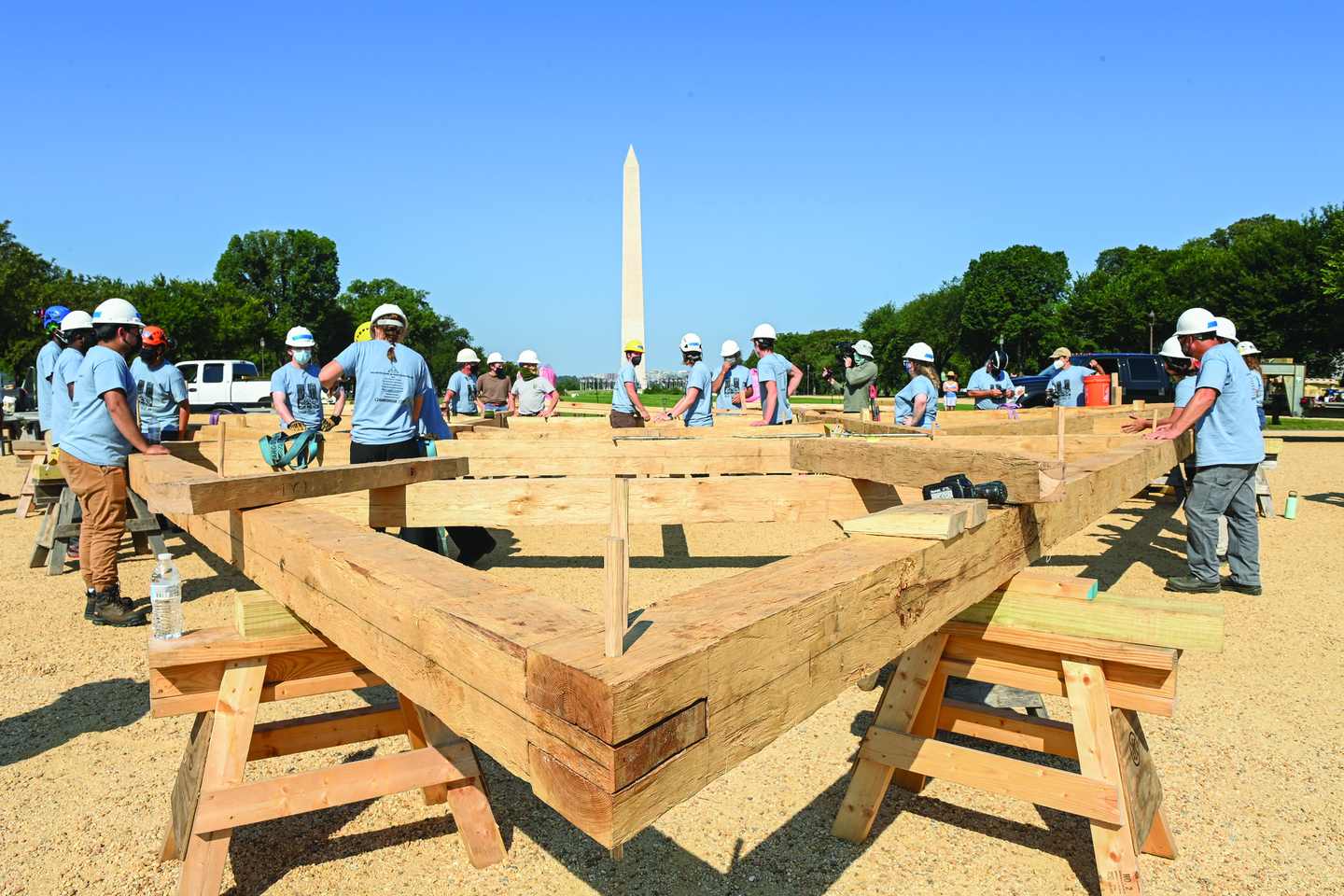
Product Reports
Notre-Dame’s fire leads to a teachable moment as students rebuild Truss Number 6.
The world watched in horror in April 2019 when Notre-Dame cathedral caught fire. It was unthinkable that such a tragedy could threaten the complete destruction of one of the greatest churches built by humankind. In the days following the fire, the tenuous structure was stabilized, and the world sent millions of dollars in support of saving the beloved monument.
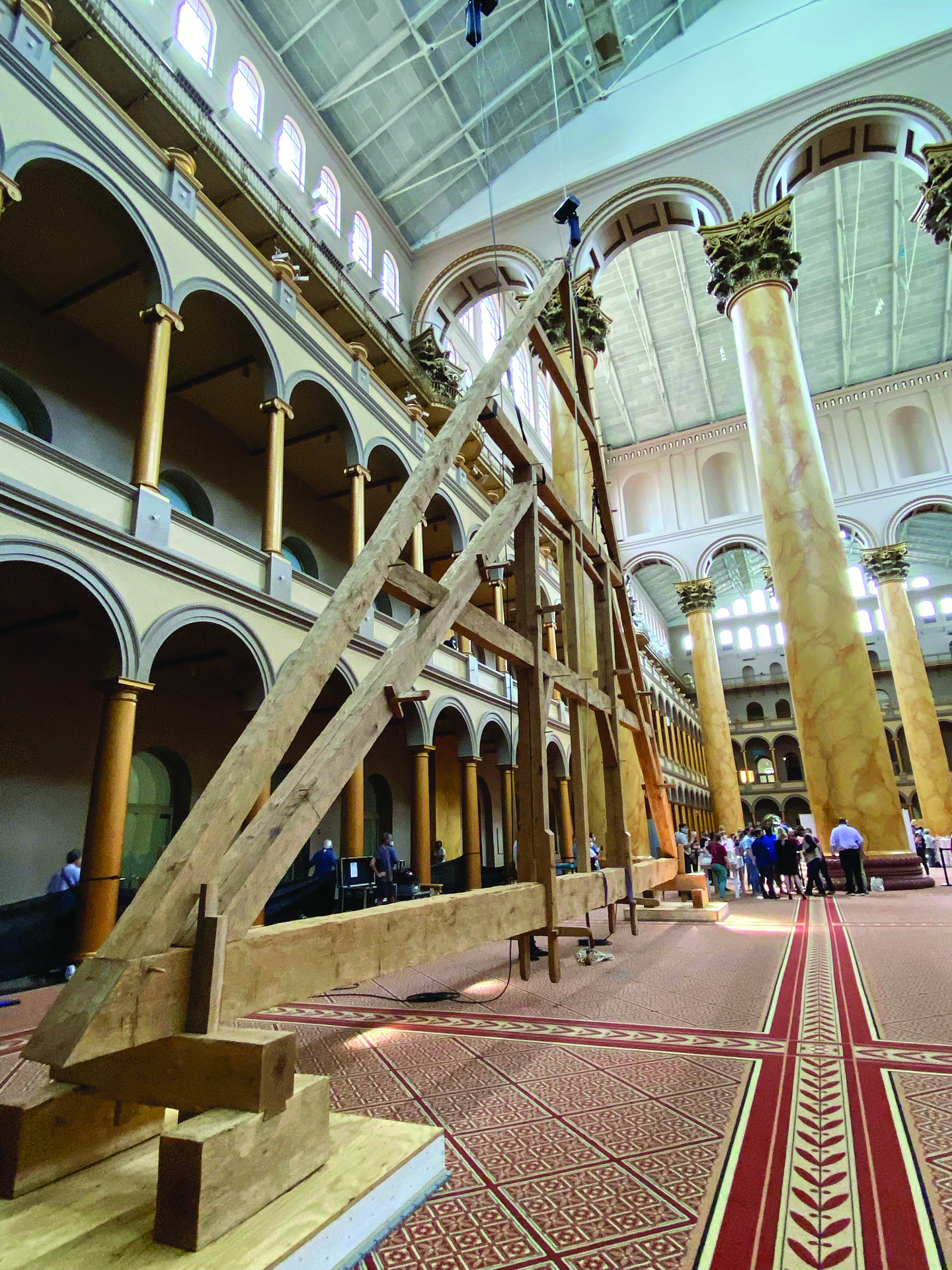
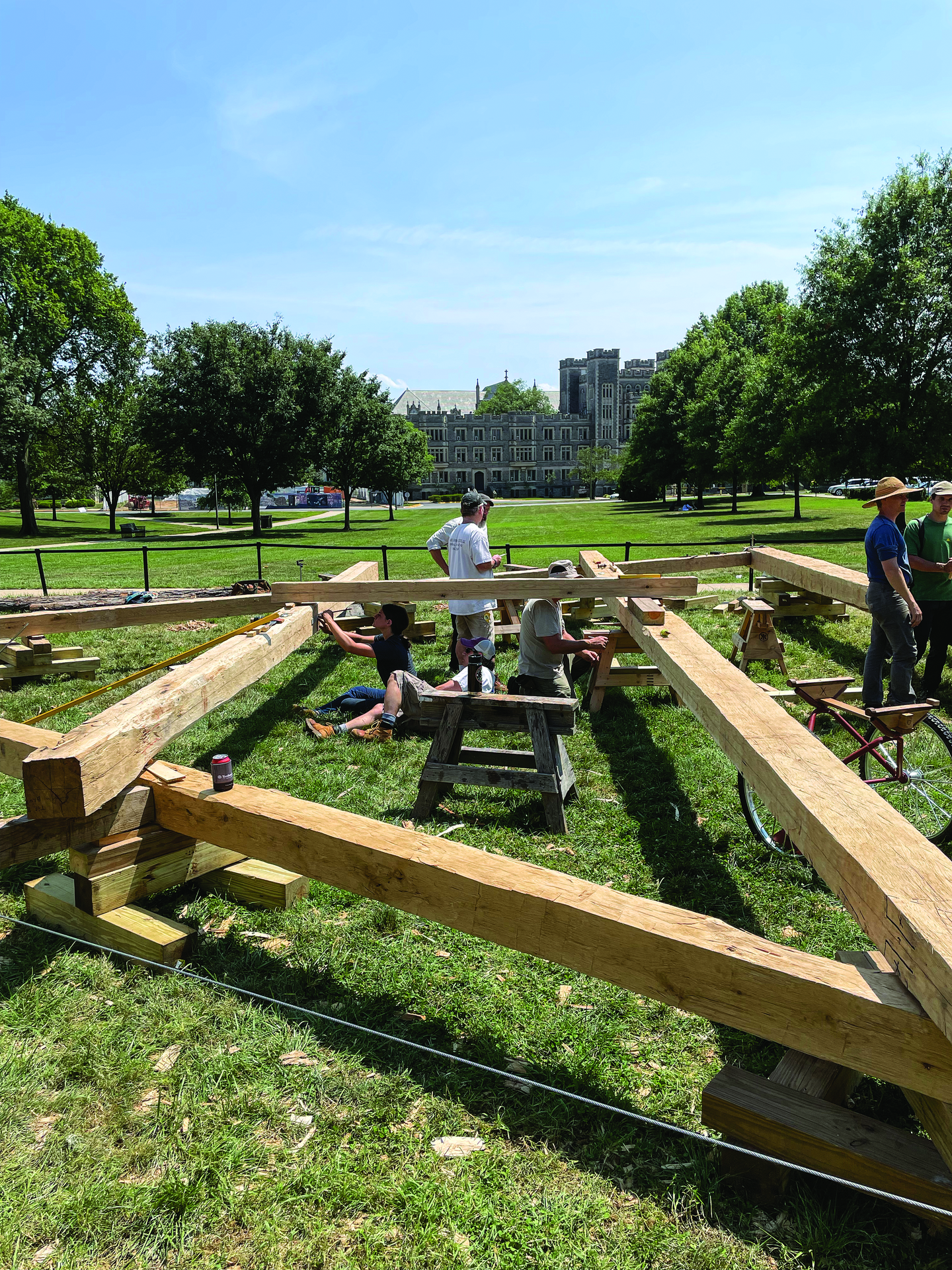
In 2020, against the background of the pandemic, when it became difficult to get people together, Rick and Laura Brown, co-founders of the nonprofit Handshouse Studio, conceived an idea to respond to the destruction at the church with a collaborative effort to build a truss based on documentation from Notre-Dame. They would use medieval timber framing practices and involve both architecture students at The Catholic University of America in Washington, D.C., and members of the Timber Framers Guild.
Brown approached Catholic University’s Tonya Ohnstad, AIA, NCARB, associate dean of graduate studies and assistant professor of practice at the School of Architecture and Planning. Professor Ohnstad agreed to teach a six-week course in which students would study the architectural history of Notre-Dame; learn timber framing skills by creating models, then hewing, assembling, and raising a truss on the University Mall; and planning an exhibit at the National Building Museum. The frame was erected for one day on the National Mall, with help from the National Park Service Historic Preservation Training Center. It was then transported mostly by truck—with the largest element carried by hand about three-quarters of a mile—to the National Building Museum, where the truss and the exhibit were installed on August 6, 2021, and remained for two months.
With the support of Charpentiers sans Frontières (Carpenters without Borders), Handshouse acquired official drawings created by Rémi Fromont and Cédric Trentesaux, lead architects on the Notre-Dame reconstruction process. The 2019 fire completely destroyed the medieval wooden roof structure known as La Forêt (the forest), made up of more than 1,300 oak trees.
Ohnstad’s course was comprehensive, starting with the students investigating the architecture and building methods of the French Gothic church as well as general medieval timber framing techniques. They produced posters illustrating the complete story of the socio-cultural-tectonic history of Notre-Dame and its reconstruction, and built a 1:10 scale model of the trusses over the church’s choir. In addition, the students focused on joinery techniques and produced a series of models exploring details of Notre-Dame’s timber truss construction using historical French drawings and calling on experts in the field. Finally, the course looked at the French protocol passed down from the Middle Ages for timber harvesting, fabricating, assembly, tools, and raising techniques.
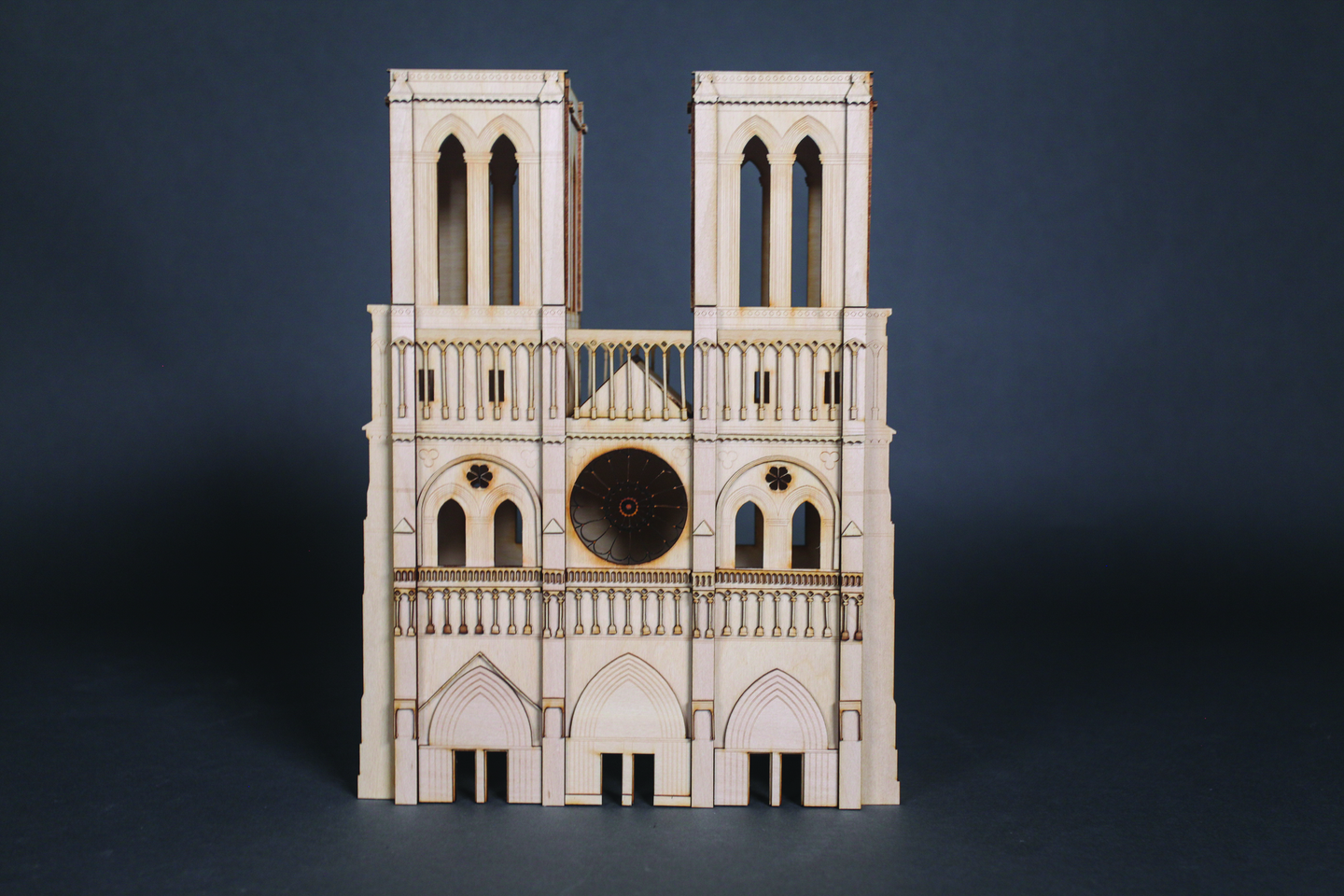
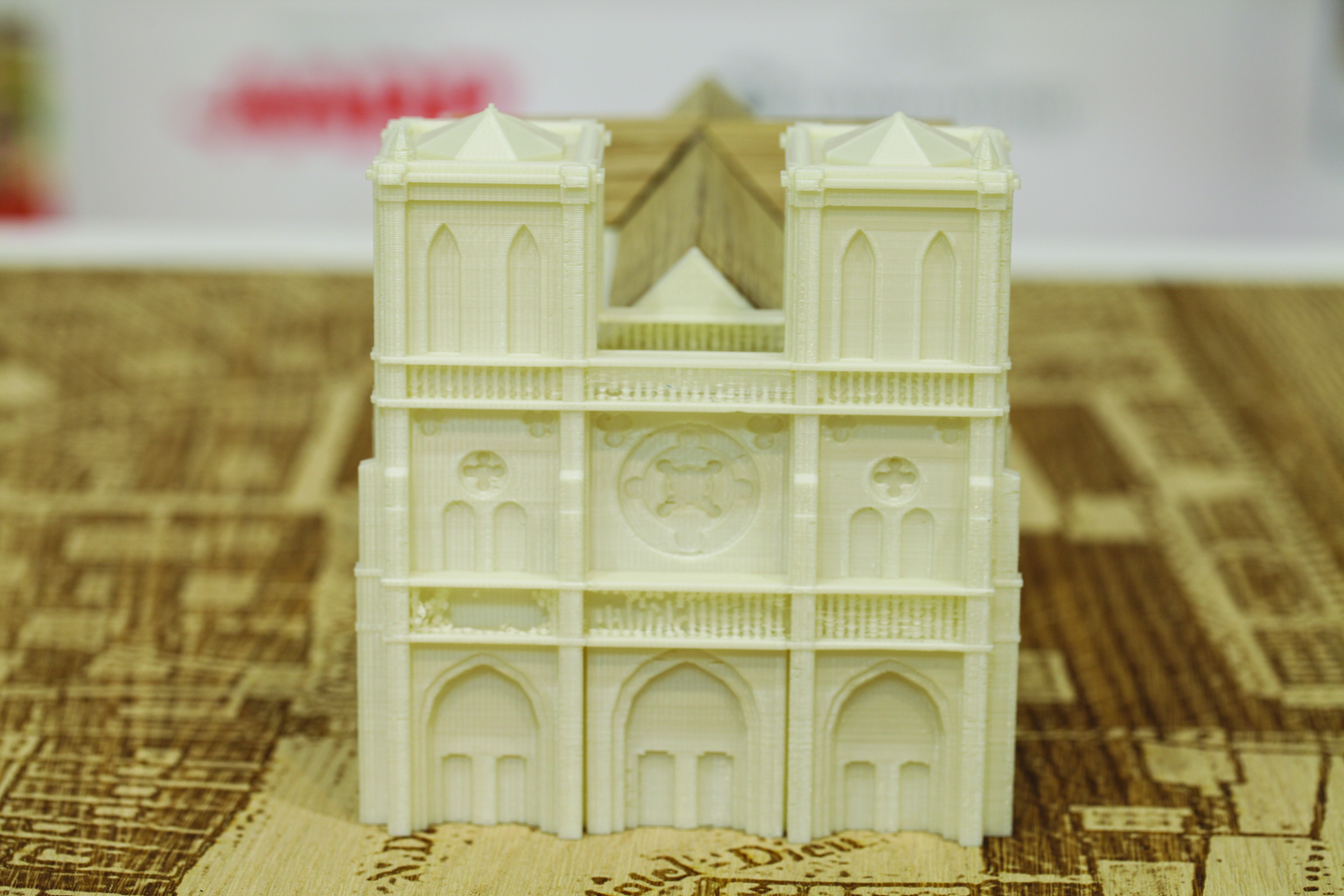
Over 10 days in mid-summer 2021, the architecture students worked alongside traditional carpenters on the University Mall to hew and cut 17 white oak logs, some more than 46 feet long, into the structural timbers. Alicia Spence of Spence Timber Works, an active Timber Framers Guild member, led this community building project—something she has done many times in the past 20 years with other guild volunteers. More than 30 professional timber framers assisted with training the students and raising the frame. Spence recounts some of the logistics, measurements, and processes for building Truss Number 6 in an authentic manner:
• The truss is 45 feet wide by 33 feet tall.
• Top chords measure 7”x 8”x 40’.
• It was hand hewn from white oak trees harvested from private forests in Lexington, Virginia, and donated to the project.
• Finding tall, slender trees with the correct diameter and taper for hewing was the biggest sourcing challenge.
• The largest piece, the tie chord, measures 15”x 10”x45’, with a green weight of 3,500 pounds.
• Hewing was a bit more than 50 percent of the work.
• The frame was lifted with block and tackle and required a minimum of 15 people per pull line to lift the truss.
Spence notes that the truss features medieval “clasping,” a process that conjoins separate timbers in a wraparound fashion and which she hasn’t had the opportunity to experience with American framing. Further, she says, the energy from the students and timber framers working together was embedded in the wood and gives new meaning to embodied energy. “To place architecture students side by side with timber framers was a great learning process, and it demonstrated the beauty and sustainability of traditional architecture,” echoed Ohnstad, who, in addition to her other titles at CUA, is director of experiences in architecture. This course and reconstruction process certainly gave her architectural students the experience of a lifetime.
This model of education has huge potential for replication. Course study, building models, practice in hewing and hand-raising, raising the truss again on the National Mall and once more at the National Building Museum—all were powerful ways to instill the process in the students, grounding them in a thorough understanding of traditional building that will serve them well in their careers.
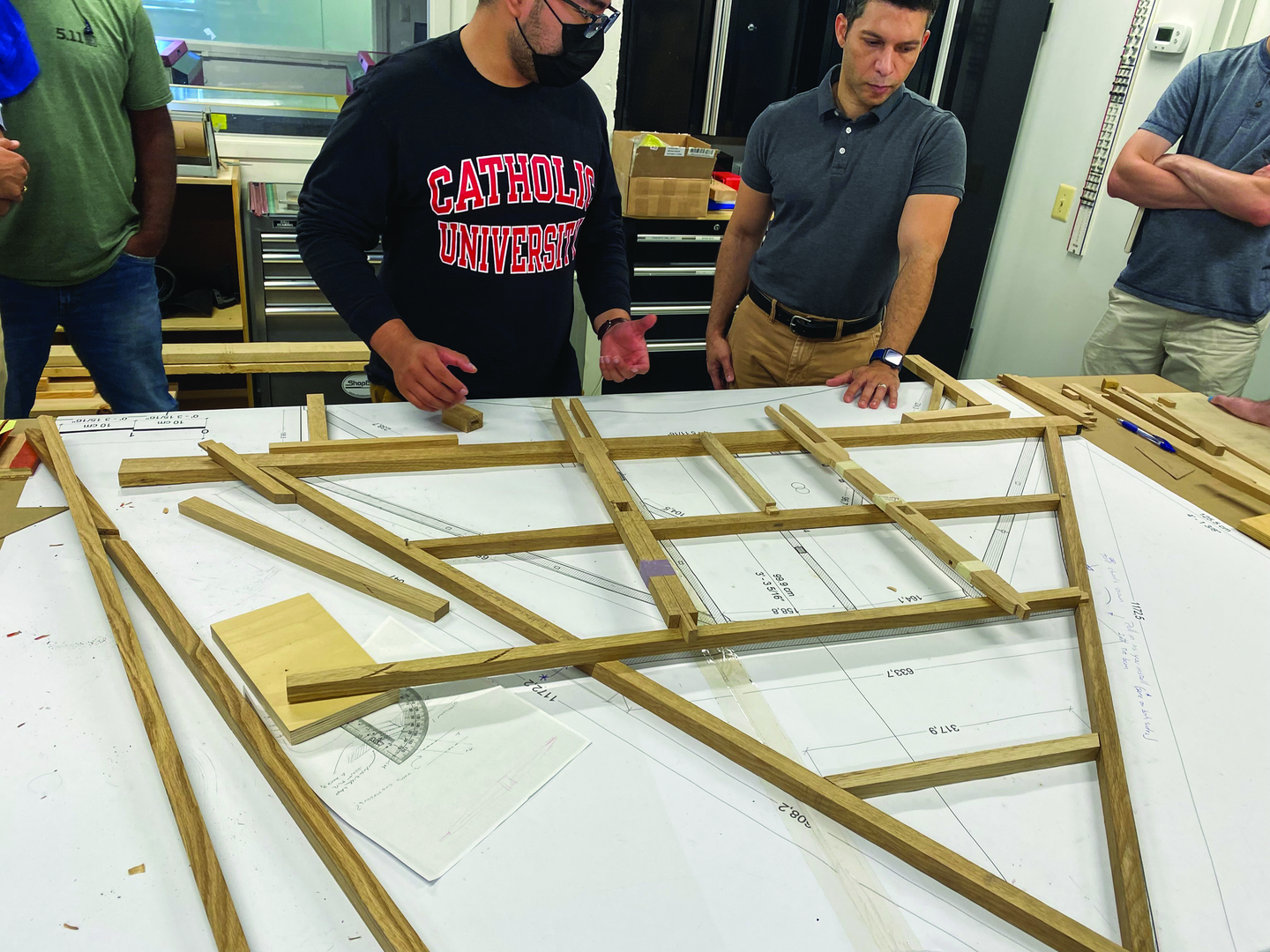
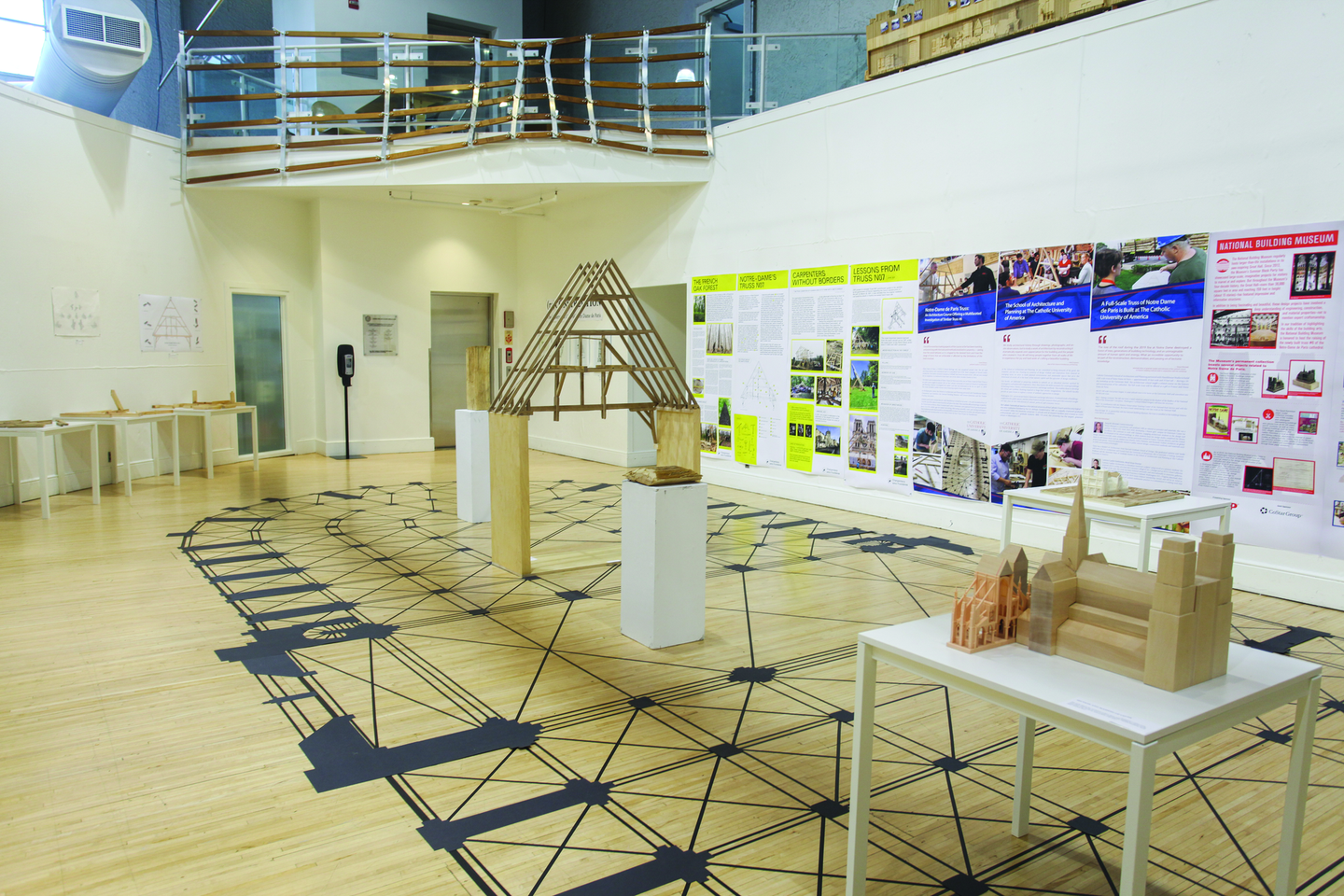
It is unlikely at press time whether Truss Number 6 will make its way to installation at Notre-Dame. The restoration process is in the hands of France’s very capable preservationists and, thanks to the generosity of so many people, no expense will be spared. Nevertheless, it is under consideration and such a collaborative gift made with North America’s finest white oak, passion, and skill just might carry a special blessing for Notre- Dame for years to come.
VIew videos of the project.
Judy L. Hayward spends her days pursuing a passion for historic architecture and the ways in which it can be reused to sustain and grow healthy communities. She develops courses in partnership with builders, architects, traditional craftspeople and others to teach both historic preservation and traditional building skills. She has one foot in the nonprofit world as executive director of Historic Windsor and the Preservation Education Institute and the other foot in the world of media and information services as education director for the Traditional Building Conference Series and Online Education Program.








